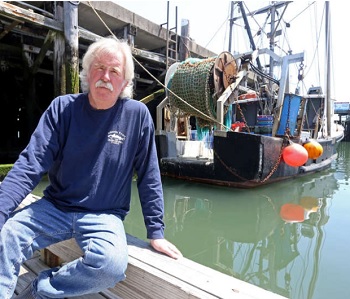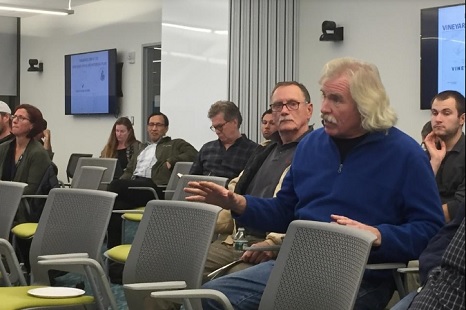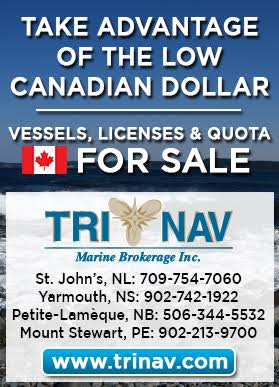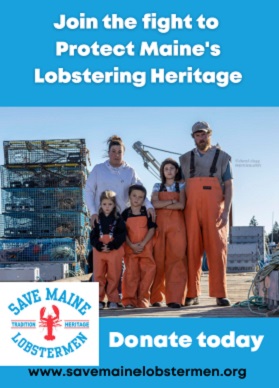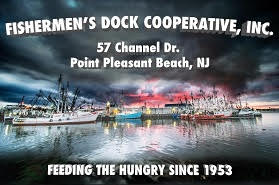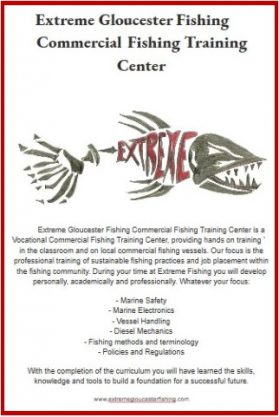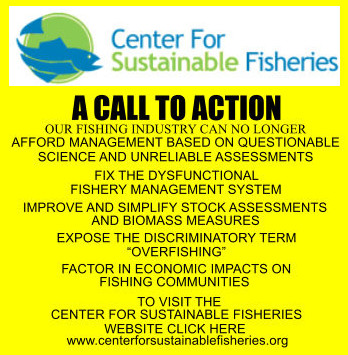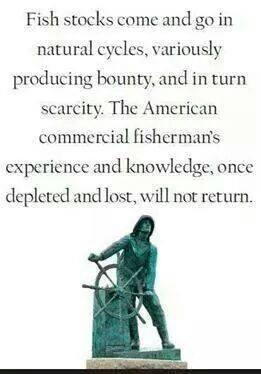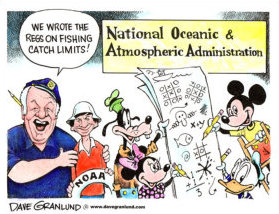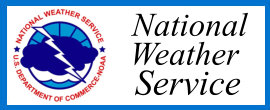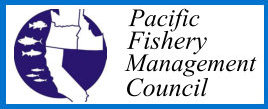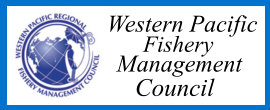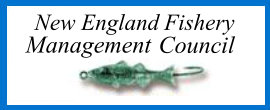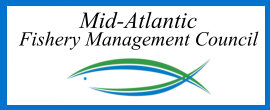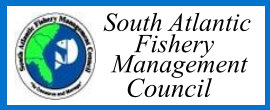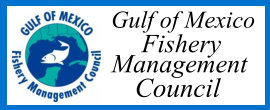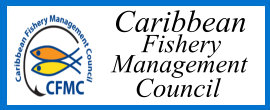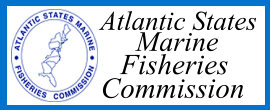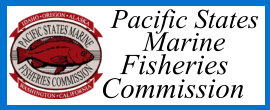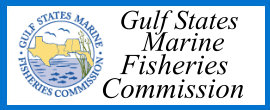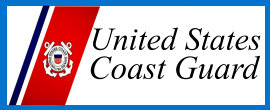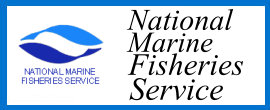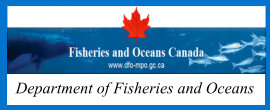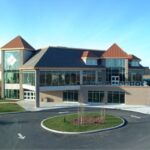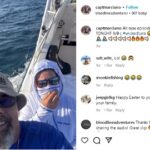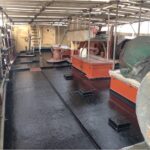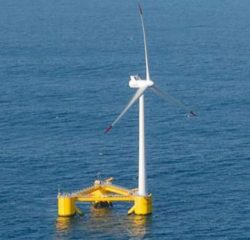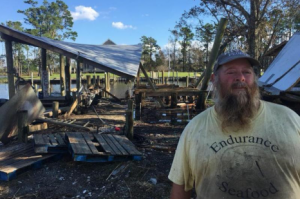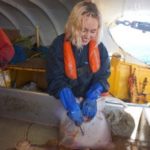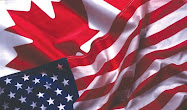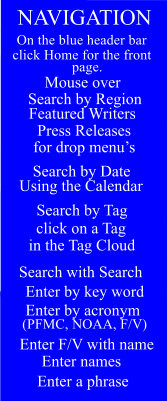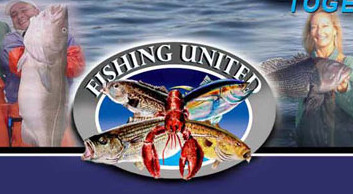Tag Archives: smast
Ferrante urges state officials to ‘step up’ advocacy for fishing
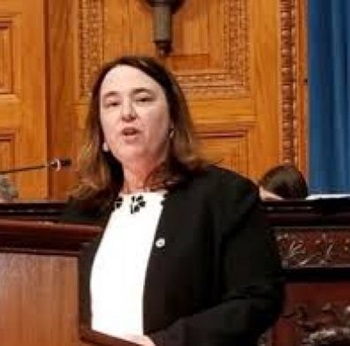 As the Beacon Hill political crowd munched on ceviches and chowders in the Great Hall on Wednesday, they heard a message from the seafood industry aimed more at Washington, D.C., than the halls of the State House. Rep. Ann-Margaret Ferrante, the daughter of a fisherman and a 30-year advocate for the fishing industry, spoke at the annual Seafood Day in the state capitol about “what the federal government does to us.” The Gloucester Democrat found fault with how the feds survey fishery resources and shrink local fishing quotas, saying that the industry will perish unless a new course is charted. She wasn’t alone: Roger Berkowitz, formerly of Legal Sea Foods, told the crowd about NOAA’s past use of “boats with broken gear” to formulate their stock assessments. more, >>CLICK TO READ<< 08:30
As the Beacon Hill political crowd munched on ceviches and chowders in the Great Hall on Wednesday, they heard a message from the seafood industry aimed more at Washington, D.C., than the halls of the State House. Rep. Ann-Margaret Ferrante, the daughter of a fisherman and a 30-year advocate for the fishing industry, spoke at the annual Seafood Day in the state capitol about “what the federal government does to us.” The Gloucester Democrat found fault with how the feds survey fishery resources and shrink local fishing quotas, saying that the industry will perish unless a new course is charted. She wasn’t alone: Roger Berkowitz, formerly of Legal Sea Foods, told the crowd about NOAA’s past use of “boats with broken gear” to formulate their stock assessments. more, >>CLICK TO READ<< 08:30
Anticipating the winds of change: A baseline assessment of Northeastern US continental shelf surficial substrates
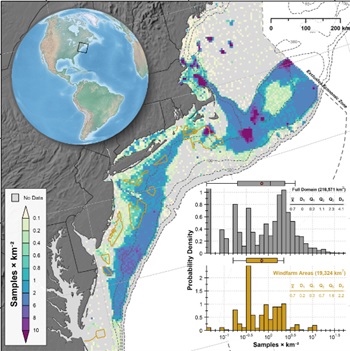 The introduction of thousands of wind turbines along the North American Atlantic continental shelf over the next decade will constitute the largest regional change in marine substrates since the retreat of the Laurentide Ice Sheet over 14,000 years ago. Here, two large data sets, SMAST drop camera survey (242,949 samples, 2003 to 2019) and the US Geological Survey databases (27,784 samples, 1966 to 2011), are combined to derive sea floor surficial substrate probability maps for the Northeastern US continental shelf from Virginia Beach to the Gulf of Maine to 300 m depth (218,571 km2). Geostatistical models were used to estimate the probability of five geologic and one biogenic substrate types being present at a 250 m resolution, and the proportional contribution of each substrate type to the seabed composition at a 500 m resolution. By providing the first synoptic maps depicting the probability of a particular substrate or combination of substrates occurring at any location on the Northeastern US continental shelf, including planned wind energy sites, we aim to (1) provide insights regarding how substrates in the areas selected for wind energy development compare with other locations, (2) motivate the development of a priori expectations for ecosystem changes to inform monitoring and research efforts going forward, and (3) to provide a baseline characterization of the Northeastern US continental shelf surficial substrates to support robust examination of the future changes observed in areas impacted by wind energy installations. more, >>CLICK TO READ<< 11:44
The introduction of thousands of wind turbines along the North American Atlantic continental shelf over the next decade will constitute the largest regional change in marine substrates since the retreat of the Laurentide Ice Sheet over 14,000 years ago. Here, two large data sets, SMAST drop camera survey (242,949 samples, 2003 to 2019) and the US Geological Survey databases (27,784 samples, 1966 to 2011), are combined to derive sea floor surficial substrate probability maps for the Northeastern US continental shelf from Virginia Beach to the Gulf of Maine to 300 m depth (218,571 km2). Geostatistical models were used to estimate the probability of five geologic and one biogenic substrate types being present at a 250 m resolution, and the proportional contribution of each substrate type to the seabed composition at a 500 m resolution. By providing the first synoptic maps depicting the probability of a particular substrate or combination of substrates occurring at any location on the Northeastern US continental shelf, including planned wind energy sites, we aim to (1) provide insights regarding how substrates in the areas selected for wind energy development compare with other locations, (2) motivate the development of a priori expectations for ecosystem changes to inform monitoring and research efforts going forward, and (3) to provide a baseline characterization of the Northeastern US continental shelf surficial substrates to support robust examination of the future changes observed in areas impacted by wind energy installations. more, >>CLICK TO READ<< 11:44
SMAST’s Kevin Stokesbury: On scallops, community collaboration, and a lifelong love of the ocean
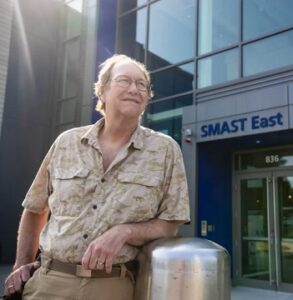 Growing up on the Bay of Fundy in Nova Scotia, Kevin Stokesbury spent as much time as possible swimming, searching for sand shrimp, and soaking up the sun with his siblings. Now as dean of the School for Marine Science and Technology (SMAST) at UMass Dartmouth, he’s finding practical applications for his passion with the sea. Stokesbury has played an integral role in revitalizing the scallop industry in New Bedford, inventing a drop camera in 1999 that snapped photos of scallops living on the seafloor, giving scientists and fishermen much more precise estimates of scallop numbers than previously available. The location map and information accompanying the photographs have proved vital. Stokesbury’s invention has greatly boosted the local economy. Before the drop camera, scallop boats brought in an annual harvest valued around $89 million. In 2021, it was $670 million, according to a NOAA commercial landings report. Video, Photos, >click to read< 17:41
Growing up on the Bay of Fundy in Nova Scotia, Kevin Stokesbury spent as much time as possible swimming, searching for sand shrimp, and soaking up the sun with his siblings. Now as dean of the School for Marine Science and Technology (SMAST) at UMass Dartmouth, he’s finding practical applications for his passion with the sea. Stokesbury has played an integral role in revitalizing the scallop industry in New Bedford, inventing a drop camera in 1999 that snapped photos of scallops living on the seafloor, giving scientists and fishermen much more precise estimates of scallop numbers than previously available. The location map and information accompanying the photographs have proved vital. Stokesbury’s invention has greatly boosted the local economy. Before the drop camera, scallop boats brought in an annual harvest valued around $89 million. In 2021, it was $670 million, according to a NOAA commercial landings report. Video, Photos, >click to read< 17:41
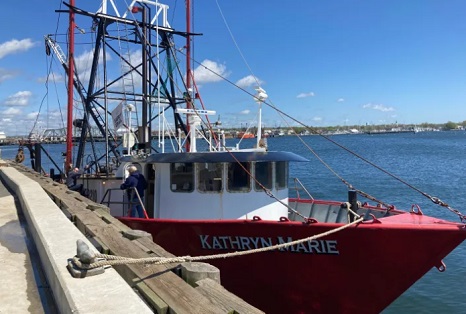
New Bedford’s fishing community is working with Vineyard Wind. Here’s how.
For Captain Tony Alvernaz, accepting a job doing safety work for Vineyard Wind has provided added income for his family and the families of the people who work for him. They are monitoring the work zone for Vineyard Wind as the company proceeds with turbine installation and at the same time are helping get the word out to other fishermen, according to Crista Bank, the fisheries manager at Vineyard Wind. Bank said the involvement of fishing vessels in the project is really important and that the same opportunities are offered to a single vessel owner, a scallop owner with a couple of boats or vessels that are up to international standards. “We’re trying to make sure we’re contracting with all different sized vessels and vessel owners,” she said. >click to read< 08:10
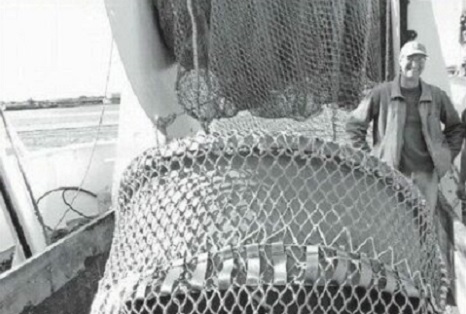
Jim Kendall – Finding Common Ground
With regard to the letter from Sam Novello posted on Fisherynation.com, Finding Common Ground off to a Bad Start, he very eloquently laid out some of the faults, errors, and out and out incompetence of the Northeast Fisheries Science Center with respect to their continued mismanagement of the Northeast fisheries stock assessments. I know from past work and associations with the NEFSC that this has been going on for so long that they likely now believe their own Mantra about their science being the best (and only way) in which to compile the NE groundfish stock assessment. Unfortunately groundfish is not their only problematic stock assessment. >click to read< 16:32
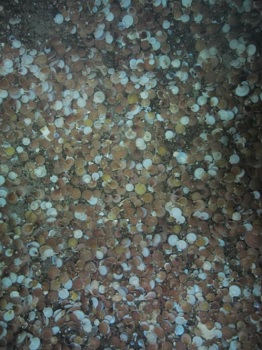
Stokesbury’s image-based, drop camera survey has been pivotal in the revival of the scallop industry
Stock assessment is one of the many key areas of research being conducted by several professors at UMass Dartmouth’s School for Marine Science & Technology (SMAST). Efforts led by Professors Steve Cadrin, Pingguo He, and Kevin Stokesbury help characterize how offshore wind development interacts with the marine environment, including important fisheries and critical habitat. Their findings are also critical in advancing offshore wind in a sustainable manner while minimizing impacts to existing marine activities and resources. >click to read< 13:34
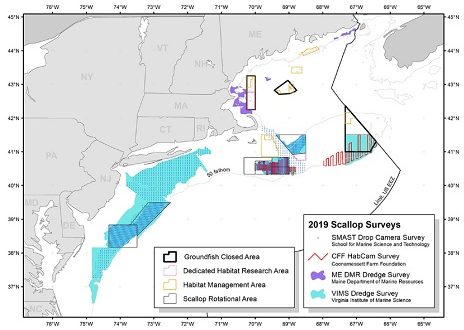
2019-2020 Sea Scallop Research Set-Aside Awards Announced
Northeast Fisheries Science Center and the New England Fishery Management Council (NEFMC) have selected 13 projects for awards through the Sea Scallop Research Set-Aside (RSA) Program. The awards are expected to generate more than $14 million; $2.8 million to fund research, and $11.4 million to compensate industry partners who harvest set-aside quota.,,, Among the research projects that will be supported this year are automated image annotation for optical scallop surveys, testing different scallop dredges for efficiency and performance, and development of a high-resolution model to assess the potential impact of offshore wind resource facilities on the regional fishery industry.>click to read<16:42
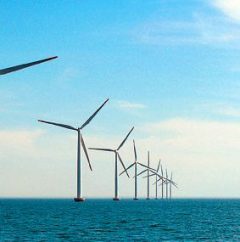
Mass. commercial fishermen decry offshore wind projects’ pace
If fully built out, the offshore wind farms would cover a 1,400-square-mile area larger than the Ocean State and would negatively impact marine life and fishing grounds, the group said. “Commercial fishing families, as stewards of the ocean, are concerned that a new industry is developing at a rapid pace without adequate science and risk management,” the Massachusetts Fishermen’s Partnership stated in a release Wednesday. The fishermen’s group said Vineyard Wind is rushing the project to ensure it receives federal tax credits before they expire.,,, Wednesday’s statement from Massachusetts fishermen came as they try to reach an agreement with Vineyard Wind on a compensation package,>click to read<15:37

Vineyard Wind to Implement UMass Dartmouth’s Fisheries Monitoring Studies
Vineyard Wind announced today that it will implement recommendations from the University of Massachusetts Dartmouth’s School for Marine Science and Technology (SMAST) to guide the project’s fisheries monitoring studies during construction, as well as to initiate longer-term studies as part of a regional approach to fisheries studies. SMAST’s recommendations were based on its expertise as a leading fisheries research center as well input from active fishermen, government agencies, and academia. >click to read<18:31
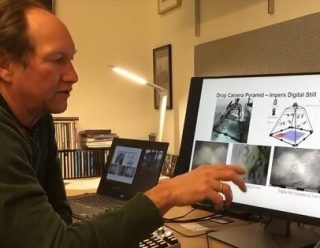
SouthCoast Man of the Year: Kevin Stokesbury continues to seek solutions to fishing industry challenges
It’s pretty well known around these parts that homegrown research proved the ocean held more Atlantic sea scallops than federal regulators thought. And a lot of folks know that the value of those succulent bivalves has made New Bedford the highest-grossing fishing port in America for 18 years running. Starting in the late 1990s, Professor Kevin Stokesbury of the School for Marine Science and Technology at UMass Dartmouth, working with SMAST founding dean Brian Rothschild, developed a video technique to count scallops on the seafloor without harvesting or killing them. Along the way, he pioneered a partnership with local fishermen. >click to read<11:20
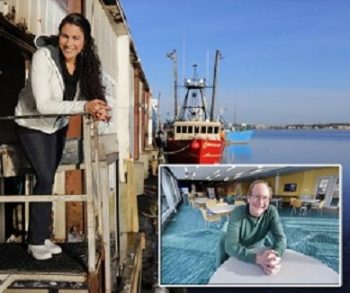
Lifting all boats: 2018 honorees fight for the future of the New Bedford fishing industry
The year 2018 was like none other for the New Bedford fishing industry. The groundfish industry, already reeling from several decades of species collapse and arduous federal regulations, suffered a crippling setback with the National Oceanic and Atmospheric Administration’s ban on fishing in Sector 7. The Standard-Times and SouthCoastToday this year are proud to name Cassie Canastra and Kevin Stokesbury as the SouthCoast Woman and Man of the Year for what they have done for the industry that year after year makes New Bedford the Number 1 dollar fishing port in the nation. >click to read<23:12
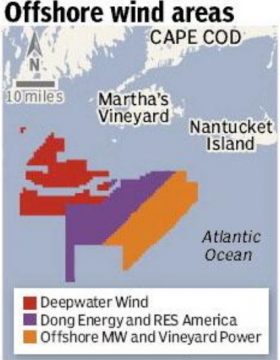
Vineyard Wind Appoints Crista Bank as Fisheries Liaison
Vineyard Wind today announced the appointment of Crista Bank as Fisheries Liaison. In this role, Bank will lead the project’s regional engagement with fishing industry representatives on Cape and Islands, the South Coast, Rhode Island, and along the East Coast. A fisheries scientist, Bank brings extensive local, regional, national and international experience and deep knowledge of marine science and fisheries issues to her role at Vineyard Wind. >click to read<10:15
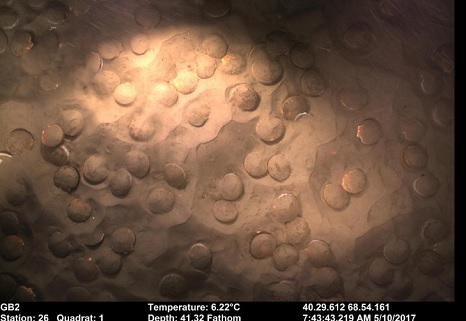
Don Cuddy: Mattapoisett company moving fishing tech forward
Sometimes a chat over a fence is all it takes to set great things in motion. Fairhaven resident Karl Edminster was talking with his neighbor, marine researcher Emily Keiley, when she mentioned that SMAST had an underwater cable that had suffered damage on a fisheries survey cruise. She knew Karl’s job had something to do with electrical work. He said he’d take a look. In fact, Karl is the president of Elecrtromechanica, a high tech design and build engineering outfit based in Mattapoisett. They spliced the cable. “But we told them we do more than fix cables,” >click to read<15:04
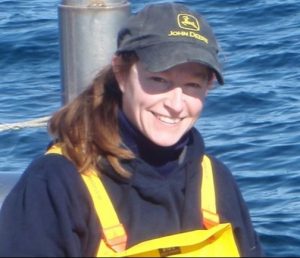
Fisheries scientist takes the spotlight in Fishing Heritage Center’s ‘A Day in the Life’ series
The New Bedford Fishing Heritage Center’s A Day in the Life speaker series continues tonight, March 15, with SMAST fisheries scientist Crista Bank. Beginning at 7 p.m., Bank will share her story and discuss the cooperative research she is currently conducting with the commercial fishing industry. Admission to A Day in the Life is free for Fishing Heritage Center members, and $5 for non-members. The Center is handicap accessible through the parking lot entrance. Free off-street parking available. >click to read<22:33
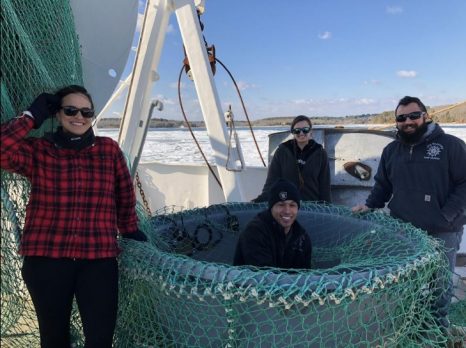
Don Cuddy – SMAST codfish counting innovation looks promising
Last December the New England Fishery Management Council voted to increase the amount of cod available to commercial fishermen in the Gulf of Maine by 39% for the 2018 fishing year. This is welcome news. New England fishermen have endured some lean years since 2013 when the cod quota was slashed by 78 percent after new data incorporated into the 2011 assessment indicated that the stock was lower than previously estimated-obviously a great deal lower. Estimating how many codfish might be out there at any given time is the greatest challenge facing fishery managers and the numbers have been subject of much controversy, with fishermen continually decrying the “best available science” as inadequate. >click to read< 19:25
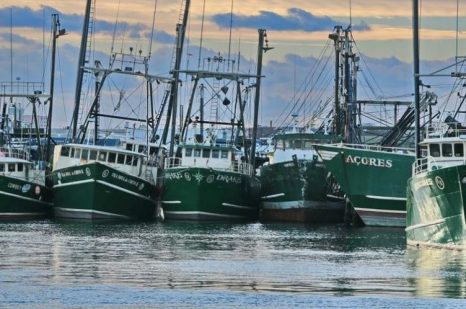
300 jobs lost in first month of NOAA’s Sector XI groundfishing ban
Nearly two months have passed since NOAA imposed a groundfishing an on Carlos Rafael’s fleet. Those within the Port of New Bedford estimate it’s put upward of 80 fishermen out of work. That number merely only scratches the surface according to a study done by SMAST professor Dan Georgianna. Within the first 30 days of the ban, Georgianna estimates that across the Northeast 300 jobs were lost, with an income loss of about $5.7 million. When including the retail loss the number surges to $12 million. >click here to read<19:26
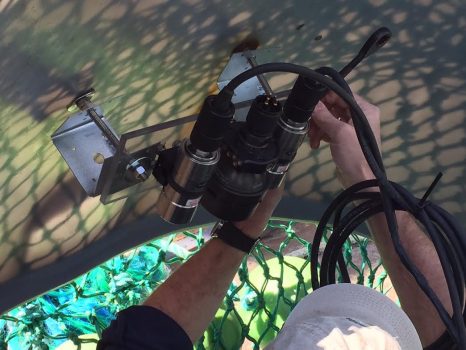
Live Cam May Show True Status of Atlantic Cod Fishery
Atlantic cod, New England’s most iconic fish, has been reported at historic lows for years, but fishermen hope a new video monitoring technique will prove there are more of the fish than federal surveyors believe. Ronnie Borjeson, who has been fishing for more than 40 years, says the federal surveys don’t match up with what fishermen are seeing. “I don’t care if you’re a gillnetter, a hook and line guy, a trawl guy,” he said, “there’s codfish everywhere up there. Everywhere. You can’t get away from them.” Borjeson helped test a video rig designed by researchers at the University of Massachusetts Dartmouth that allows them to record fish underwater and count them on the video later. With this rig, scientists can sample a larger area in the same amount of time and hopefully improve federal estimates of how many cod are left. click here to read the story 16:26
Counting Fish – A film by Don Cuddy click here to watch
Many fishermen believe Stokesbury saved the scallop industry
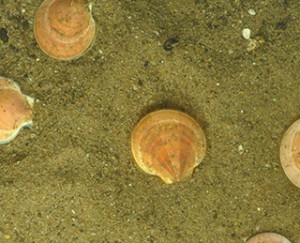 Well, I guess that I had better start writing some of this stuff down, as it seems that my memory is getting fuzzier by the day. Not an uncommon affliction for an old fisherman, who has been put ashore, but who still has enough recall to remember some things that are just too important to allow to fade into obscurity! I had been a scalloper out of New Bedford for 32 years, both as a deckhand, and as a captain of several high-line scalloper vessels. Over all those years there were several trips that stay relatively fresh in my mind’s eye, but one of the most important and fulfilling ones actually occurred after I came ashore. By Jim Kendall click here to read the story 21:55
Well, I guess that I had better start writing some of this stuff down, as it seems that my memory is getting fuzzier by the day. Not an uncommon affliction for an old fisherman, who has been put ashore, but who still has enough recall to remember some things that are just too important to allow to fade into obscurity! I had been a scalloper out of New Bedford for 32 years, both as a deckhand, and as a captain of several high-line scalloper vessels. Over all those years there were several trips that stay relatively fresh in my mind’s eye, but one of the most important and fulfilling ones actually occurred after I came ashore. By Jim Kendall click here to read the story 21:55
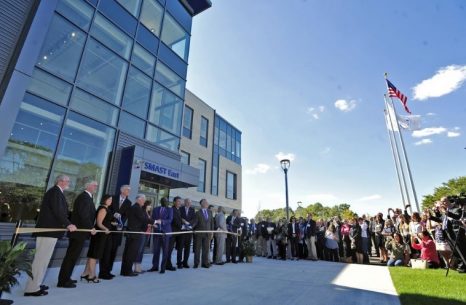
SMAST East opening draws interest nationally
The official opening of the second SMAST facility created ripple effects beyond its location on South Rodney French Boulevard. Construction crews erected SMAST East at a cost of $55 million. The names on the guest list, which packed into the first floor of the 64,000 square foot building Friday, displayed its incalculable value to the SouthCoast. From the political arena, Cong. Bill Keating, Sen. Mark Montigny, Rep. Antonio Cabral and Mayor Jon Mitchell addressed the crowd at the ribbon cutting ceremony. NOAA Fisheries Greater Atlantic Regional Administrator and former New Bedford Mayor John Bullard and former dean of SMAST Brian Rothschild sat in attendance. Eastern Fisheries President Roy Enoksen and Executive Director of New Bedford Seafood Consulting Jim Kendall each listened to the 90-minute presentation that ended with a ribbon cutting. click here to read the story 09:34
Massachusetts: $185K for fishing research in proposed fiscal year 2018 budget
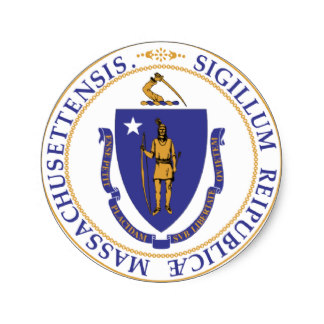 The state Senate has added $185,000 for commerical fishing research to its proposed Fiscal Year 2018 budget. State Senate Minority Leader Brice Tarr, R–Gloucester, and state Sen. Mark Montigny, D–New Bedford, worked together to amend the budget. The money will help fund the Industry Based Survey, which partners commercial fishermen with scientists to gather data and develop a science-based understanding of the region’s cod stocks. Those stocks are often viewed as a barometer of the health of many other ground fish stocks, such as haddock and flounder. click here to read the story 18:14
The state Senate has added $185,000 for commerical fishing research to its proposed Fiscal Year 2018 budget. State Senate Minority Leader Brice Tarr, R–Gloucester, and state Sen. Mark Montigny, D–New Bedford, worked together to amend the budget. The money will help fund the Industry Based Survey, which partners commercial fishermen with scientists to gather data and develop a science-based understanding of the region’s cod stocks. Those stocks are often viewed as a barometer of the health of many other ground fish stocks, such as haddock and flounder. click here to read the story 18:14
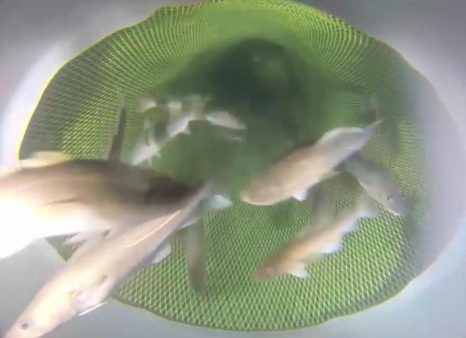
New SMAST camera can help assess cod stocks in Gulf of Maine
Researchers from UMass Dartmouth say they have successfully tested an underwater video-survey system that they hope will provide an accurate method to assess Atlantic cod stocks. In collaboration with fishermen, the research team recently placed high-resolution cameras in an open-ended commercial trawl net on Stellwagen Bank in the Gulf of Maine, known as one of the world’s most active marine sanctuaries. The cameras captured images of cod and other groundfish as they passed through the net. Periodically, researchers from UMD’s School for Marine Science & Technology closed the net for short periods to collect length, weight, and take other biological samples from some of the fish. The fish are unharmed and are returned to the sea. The system is design to be portable, so scientists can set it up on different fishing vessels. Professor Kevin Stokesbury, head researcher on the project, said the video system is an important tool at a time of uncertainty about the groundfish stock in the Gulf of Maine. Read the story here 17:57 Read the press release and watch the video here
New Bedford again tops nation for dollar value of fishing catch
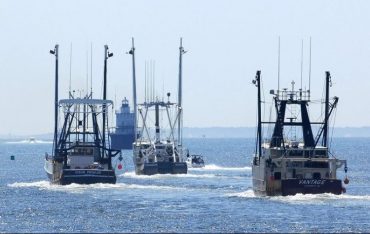 The city’s port has again topped the country for dollar value of its fishing catch, NMFS reported this week, citing 2015 landings worth $322 million. That marks 16 years in a row that New Bedford has held the top-value title, which is thanks largely to scallops. Dutch Harbor, Alaska, again was tops for total volume of catch, landing 787 million pounds last year. “The scallop industry has put New Bedford at the top of the food chain, as it were, of fishing ports for the last 16 years — that’s a very impressive streak,” said Ed Anthes-Washburn, port director for the city’s Harbor Development Commission. “It really shows the impact of scallops but also the impact of cooperative research.” In the 1990s, SMAST scientists Brian Rothschild and Kevin Stokesbury pioneered innovations in counting scallops, with cameras tested and used on local scallopers. The resulting data affected stock assessments by the National Oceanic and Atmospheric Administration (NOAA), ultimately leading to larger catch quotas and helping secure steady catches for waterfront businesses. Read the rest here 19:52
The city’s port has again topped the country for dollar value of its fishing catch, NMFS reported this week, citing 2015 landings worth $322 million. That marks 16 years in a row that New Bedford has held the top-value title, which is thanks largely to scallops. Dutch Harbor, Alaska, again was tops for total volume of catch, landing 787 million pounds last year. “The scallop industry has put New Bedford at the top of the food chain, as it were, of fishing ports for the last 16 years — that’s a very impressive streak,” said Ed Anthes-Washburn, port director for the city’s Harbor Development Commission. “It really shows the impact of scallops but also the impact of cooperative research.” In the 1990s, SMAST scientists Brian Rothschild and Kevin Stokesbury pioneered innovations in counting scallops, with cameras tested and used on local scallopers. The resulting data affected stock assessments by the National Oceanic and Atmospheric Administration (NOAA), ultimately leading to larger catch quotas and helping secure steady catches for waterfront businesses. Read the rest here 19:52
SMAST wins patent on 3D counting, measuring fish on deck of a boat
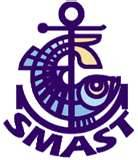 A newly patented 3-D photograph system developed at the UMass Dartmouth School for Marine Science and Technology soon may greatly add to scientists’ knowledge about ocean fish populations, the school announced Tuesday. The device, the work of now-retired dean Dr. Brian Rothschild and graduate student Glenn Chamberlain, includes two digital cameras and a reference frame. Using a common technique called stereo photogrammetry, the device essentially uses 3-D images to map the surface of the fish. The reference frame will permit the monitoring not only of the number of fish, but their size. The fish can be on the deck, or in a net, and the data obtained can be stored permanently, Rothschild said. “The concept is very simple,” Rothschild said, and the parts are easily obtainable commercially; the two cameras cost about $500, he said. “We built one and it did work,” he said. Read the rest here 20:32
A newly patented 3-D photograph system developed at the UMass Dartmouth School for Marine Science and Technology soon may greatly add to scientists’ knowledge about ocean fish populations, the school announced Tuesday. The device, the work of now-retired dean Dr. Brian Rothschild and graduate student Glenn Chamberlain, includes two digital cameras and a reference frame. Using a common technique called stereo photogrammetry, the device essentially uses 3-D images to map the surface of the fish. The reference frame will permit the monitoring not only of the number of fish, but their size. The fish can be on the deck, or in a net, and the data obtained can be stored permanently, Rothschild said. “The concept is very simple,” Rothschild said, and the parts are easily obtainable commercially; the two cameras cost about $500, he said. “We built one and it did work,” he said. Read the rest here 20:32
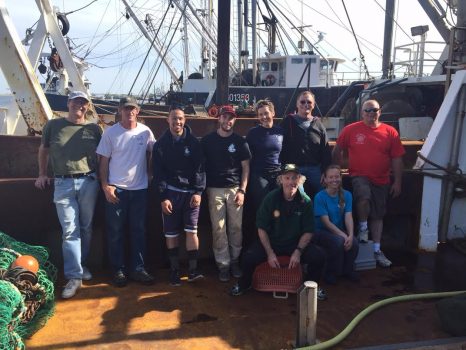
Gloucester – Fishermen, scientists to assess stock
The most incendiary divide between groundfishermen and fishing regulators in the past two years has been the discrepancy between what NOAA Fisheries says its stock assessments show and what fishermen are seeing on the water. The groundfish assessments by the National Oceanic and Atmospheric Administration — particularly for the iconic Gulf of Maine cod stock and certain flounders — have been uniformly dire, leading to the virtual shuttering of cod fishing in the Gulf of Maine and scant quotas for other species. Fishermen — including commercial groundfishermen, charter captains and even lobstermen — paint a very different portrait of what they are seeing on a daily basis: cod, cod everywhere, and not a one they can catch. On June 20, the city’s Economic Development and Industrial Corporation and fishing stakeholders will host a presentation by a team of University of Massachusetts scientists on their current findings and methodology for fish population counting in the Gulf of Maine. Read the rest here 10:09
NOAA grants SMAST $1.6 million for monkfish study
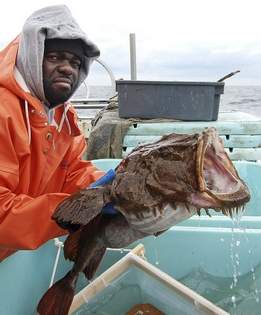 Researchers at the UMass Dartmouth School for Marine Science and Technology have won a federal grant valued at $1.6 million to conduct research into the growth and movement of monkfish, NOAA announced Tuesday. The grant is part of a unique “research set-aside” program that pays for at-sea research not with direct dollars but with fishing opportunities whose proceeds pay for the researchers and for the boat they are using. In the case of SMAST, where Dr. Steven Cadrin and research technician Crista Bank will be doing the study, 250 days at sea allocated in the grant each year for 2016 and 2017 should produce $1.361 million to pay for the boat and $270,000 for the research over two years, according to the National Oceanic and Atmospheric Administration. “A previous monkfish research set-aside grant to this group found that the current approach of estimating monkfish growth is not valid, exposing a gap in the monkfish stock assessment. This two-year project proposes to fill this gap for juvenile monkfish through this tagging study,” said a NOAA press release. Read the rest here 08:04
Researchers at the UMass Dartmouth School for Marine Science and Technology have won a federal grant valued at $1.6 million to conduct research into the growth and movement of monkfish, NOAA announced Tuesday. The grant is part of a unique “research set-aside” program that pays for at-sea research not with direct dollars but with fishing opportunities whose proceeds pay for the researchers and for the boat they are using. In the case of SMAST, where Dr. Steven Cadrin and research technician Crista Bank will be doing the study, 250 days at sea allocated in the grant each year for 2016 and 2017 should produce $1.361 million to pay for the boat and $270,000 for the research over two years, according to the National Oceanic and Atmospheric Administration. “A previous monkfish research set-aside grant to this group found that the current approach of estimating monkfish growth is not valid, exposing a gap in the monkfish stock assessment. This two-year project proposes to fill this gap for juvenile monkfish through this tagging study,” said a NOAA press release. Read the rest here 08:04
Independent scientists need not apply – NMFS denies SMAST Industry paid RSA Funding
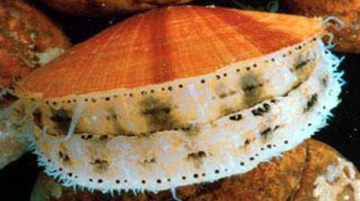 For almost 20 years now, SMAST has worked diligently alongside our fishermen to improve fishery science. Kevin’s research has earned him their respect, earned them a ton of money and earned New Bedford its position as the nation’s top fishing port. The drop camera survey he pioneered to count sea scallops on Georges Bank in 1999 was a game changer that helped to rescue an ailing industry. Anyone on the waterfront can attest to that. He did it by providing independent evidence that what fishermen had been saying was correct. There were plenty of scallops out there waiting to be harvested in spite of what the government survey would have everyone believe. Barney Frank took those survey pictures to Bill Daley, who was Secretary of Commerce at the time. Daley listened and New Bedford’s ship came in. It may now be departing. Read the op-ed here 07:27
For almost 20 years now, SMAST has worked diligently alongside our fishermen to improve fishery science. Kevin’s research has earned him their respect, earned them a ton of money and earned New Bedford its position as the nation’s top fishing port. The drop camera survey he pioneered to count sea scallops on Georges Bank in 1999 was a game changer that helped to rescue an ailing industry. Anyone on the waterfront can attest to that. He did it by providing independent evidence that what fishermen had been saying was correct. There were plenty of scallops out there waiting to be harvested in spite of what the government survey would have everyone believe. Barney Frank took those survey pictures to Bill Daley, who was Secretary of Commerce at the time. Daley listened and New Bedford’s ship came in. It may now be departing. Read the op-ed here 07:27
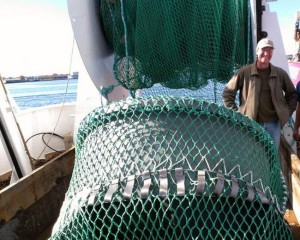
THIS IS OUTRAGEOUS! SMAST scallop researcher rejected for NOAA funding for first time since 1999
For the first time since 1999, internationally known SMAST scientist Kevin Stokesbury has been denied federally administered funding for annual scallop surveys, as government officials questioned the cost and design of his latest proposal. Many local fishermen credit Stokesbury’s work with reviving the scallop industry over more than a decade, and a prominent scalloper said Tuesday that it was hard to make sense of the funding denial this year. “We as an industry are very upset about this — it’s very disturbing,” said Dan Eilertsen, who owns six scallopers based on Fish Island. “Our fishery has been managed based on the published work that (Stokesbury) does.” The National Marine Fisheries Service, under the National Oceanic and Atmospheric Administration (NOAA), told Stokesbury on March 29 that his proposal for a $2.65 million scallop survey project had been denied for the 2016-17 grant cycle. Read the rest here 20:14
This is exciting! SMAST scientists improving cod counting technology
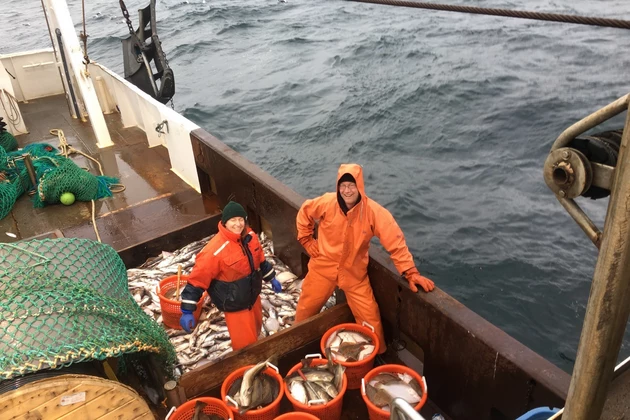 A new video system designed by UMass Dartmouth School for Marine Science and Technology (SMAST) scientists to assess the population of cod has passed its first major test, giving the researchers confidence that they can use this new approach to help improve the accuracy of future scientific assessments of this iconic species. Recent stock assessments indicate that the Gulf of Maine cod population is low and struggling to recover. Members of the fishing industry contest those results, suggesting the stock is much healthier than depicted in recent assessments. Video, Read the rest here 06:03
A new video system designed by UMass Dartmouth School for Marine Science and Technology (SMAST) scientists to assess the population of cod has passed its first major test, giving the researchers confidence that they can use this new approach to help improve the accuracy of future scientific assessments of this iconic species. Recent stock assessments indicate that the Gulf of Maine cod population is low and struggling to recover. Members of the fishing industry contest those results, suggesting the stock is much healthier than depicted in recent assessments. Video, Read the rest here 06:03






